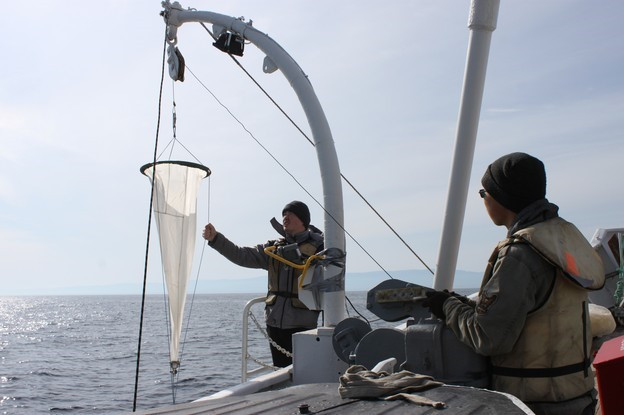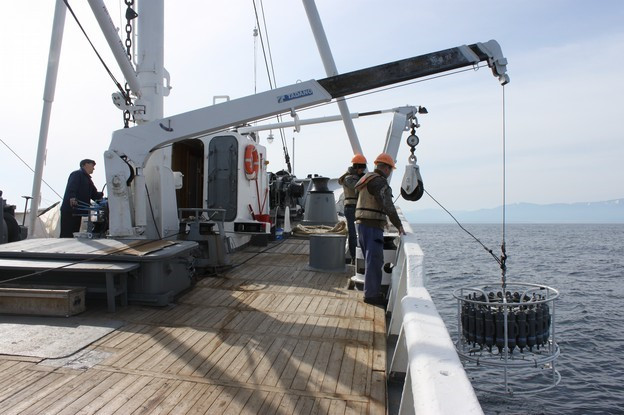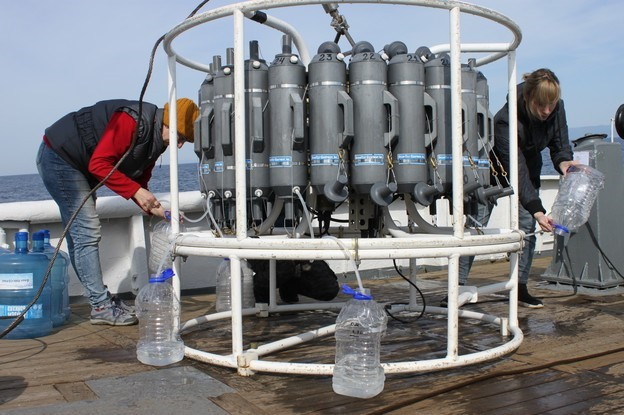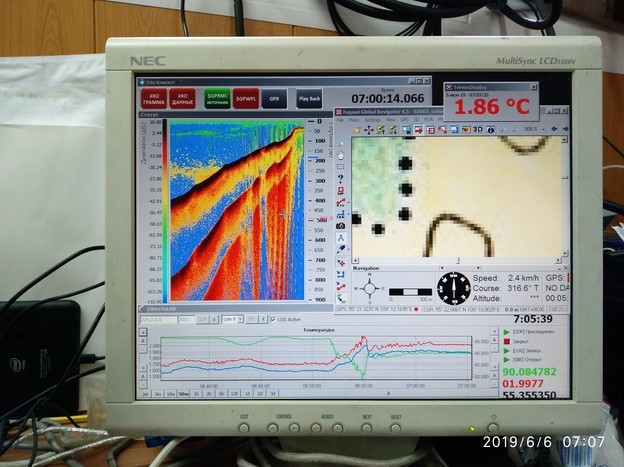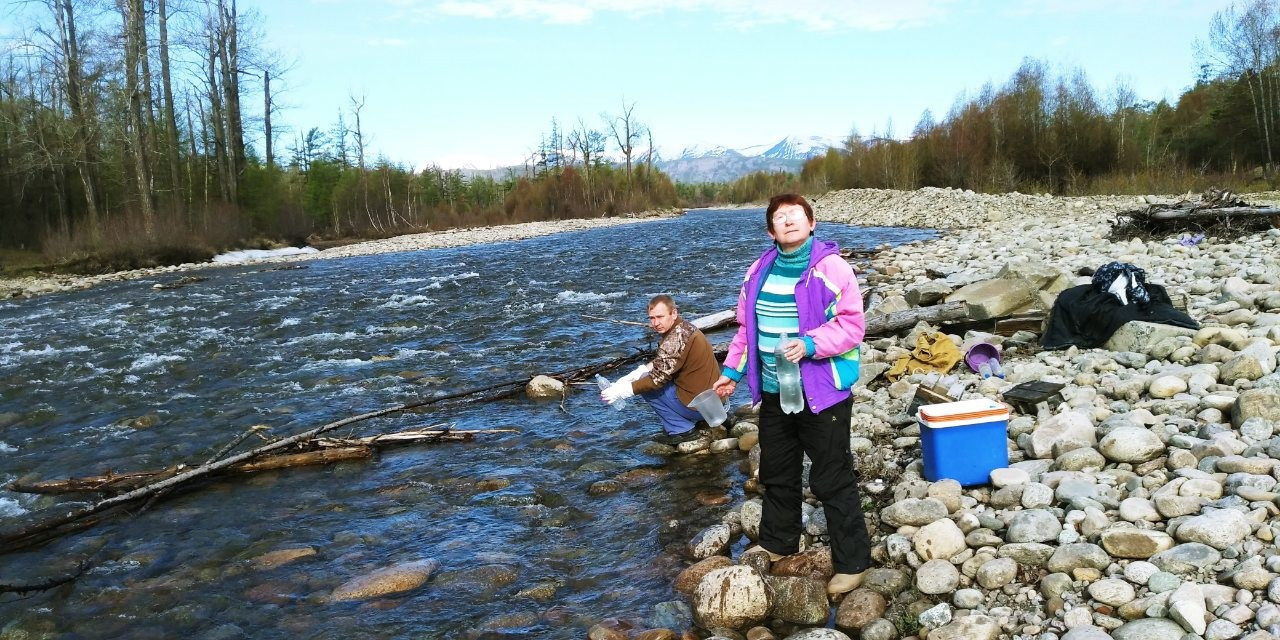Expedition on board RV “G.Yu. Vereshchagin”, May 28 –June 10, 2019.
The complex expedition within the framework of the programmes “Assessment and Forecast of Ecological State of Lake Baikal …”, “Microbial and Viral Communities in Biofilms of Freshwater Systems…”, “Studies of Evolutionary, Ecological and Molecular-Biological Aspects…”, and “Ecological and Economic Assessment of Functioning…” was carried out on board RV “G.Yu. Vereshchagin”, May 28 – June 10, 2019 throughout the entire water area of Lake Baikal.
The aim of the expedition was to continue the annual integrated monitoring of abiotic and biotic components of the Baikal ecosystem in order to identify the pattern of their spatial and temporal dynamics and perform an experimental study of the mechanisms and processes affecting the distribution and circulation of matter in the water column.
During the expedition, sampling was carried out along a standard grid of stations in longitudinal and transverse cross sections of the lake at the fixed horizons from the surface to the bottom using a Carousel SBE-32 cassette-type sampler equipped with 24 bathometers of 5-liter volume each. Water was sampled for chemical, microbiological and metagenomic analysis as well as to study the distribution and the species composition of phytoplankton. Phyto- and zooplankton samples were collected with a Jedi net. The works were carried out in three Baikal basins, as well as in Barguzin Bay, Chivyrkuy Bay and the Maloye More Strait. Water was sampled at 37 stations, and at 26 stations the water was sampled with a Jedi net. Water samples for hydrochemical and microbiological analysis were taken from 11 rivers: the Goloustnaya, the Buguldeika, the Anga, the Turka, the Barguzin, the Tompuda, the Rel, the Tyya, the Upper Angara, the Sarma, and the Kichera. Hydrophysical measurements were performed at 74 stations using a high-precision SBE-25 CTD-probe with additional sensors of dissolved oxygen and transparency. The total number of samples was as follows:
- Microbiological samples — 133
- Hydrophysical samples — 393
- Samples for methane studies — 343
- Zooplankton — 60
- Phytoplankton — 117
On board the RV, the temperature of the water surface was recorded, and the monitoring of the bubble gas seepages was performed using the Furuno sonar software, which recorded the data on echograms.
The hydrometeorological station “Cape Uskaniy” was inspected and repaired.
In the estuary of the Selenga River, the population of the Baikal omul was assessed.





